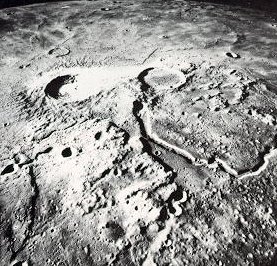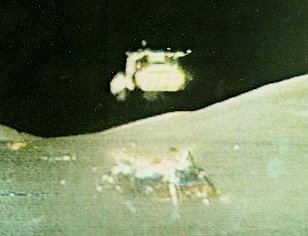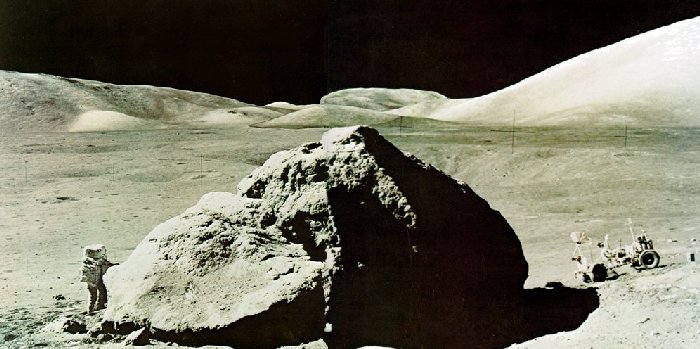Apollo Expeditions to the Moon
BEADS OF ORANGE GLASS
The modification of the surface of the valley basalt
included the addition of mantles of beads of chemically
distinctive orange glass (the "orange soil") and black
devitrified glass. The beads appear to have been formed by
volcanic processes having their origins in the deep interior of
the Moon. The titanium-, magnesium-, and iron-rich nature of
these silicate glasses surprised us in many ways. Their
approximately 10- to 30-million-year age of exposure to the Sun
is young and was expected for the dark mantling deposits seen in
photographs; but their 3.5- to 3.7-billion-year age of cooling
from a liquid was not expected. The explanation for this
difference is not yet obvious.

|
Mysterious Aristarchus and Schrüter's Valley also await some
future explorers of the Moon to give us insight.
Once considered for a mission, the sinuous rilles and
volcanic features on the Aristarchus plateau have
puzzling characteristics that are little understood.
|
All the Apollo missions left the Moon before the lunar
sunrise had progressed into the vast regions of the lunar west:
Mare Procellarum, where the mysterious features of that region's
central ridge system still await the crew of a mission diverted
after Apollo 13, and Mare Orientale, whose stark alpine rings
have been viewed only in the subdued blue light of Earth. The
promise of these regions and of the far side of the Moon has not
diminished. They seemingly watch the progression of sunrises,
awaiting the landing craft of another generation of explorers.
| | |
A panorama of lunar history is captured in this view looking
south over the Valley of TaurusLittrow. A huge fragmented
boulder had rolled almost a mile down the side of the North
Massif to here, Station 6 on our traverse
(see here).
Our LM and its light area of surface alteration can be seen
on the photo about an inch to the right of the top point
of the boulder. That's me at the left. Note the marks of my
sampling scoop on the debris resting on a slanting surface
of the boulder at left. Gene Cernan took the photos from which
this mosaic was assembled.
|
| | |
A parked Rover awaits our return from sleep before we set out
on the third EVA of Apollo 17's surface exploration.
We've parked it in an orientation that will minimize
heating of its surfaces while we are eating and sleeping in the LM.
Our activities around the LM have exposed dark soil beneath the
lighter soil caused by our descent-engine exhaust.
|

|
A lonely Rover watches with its television eye as the
last Apollo explorers depart from the Moon.
|
|




